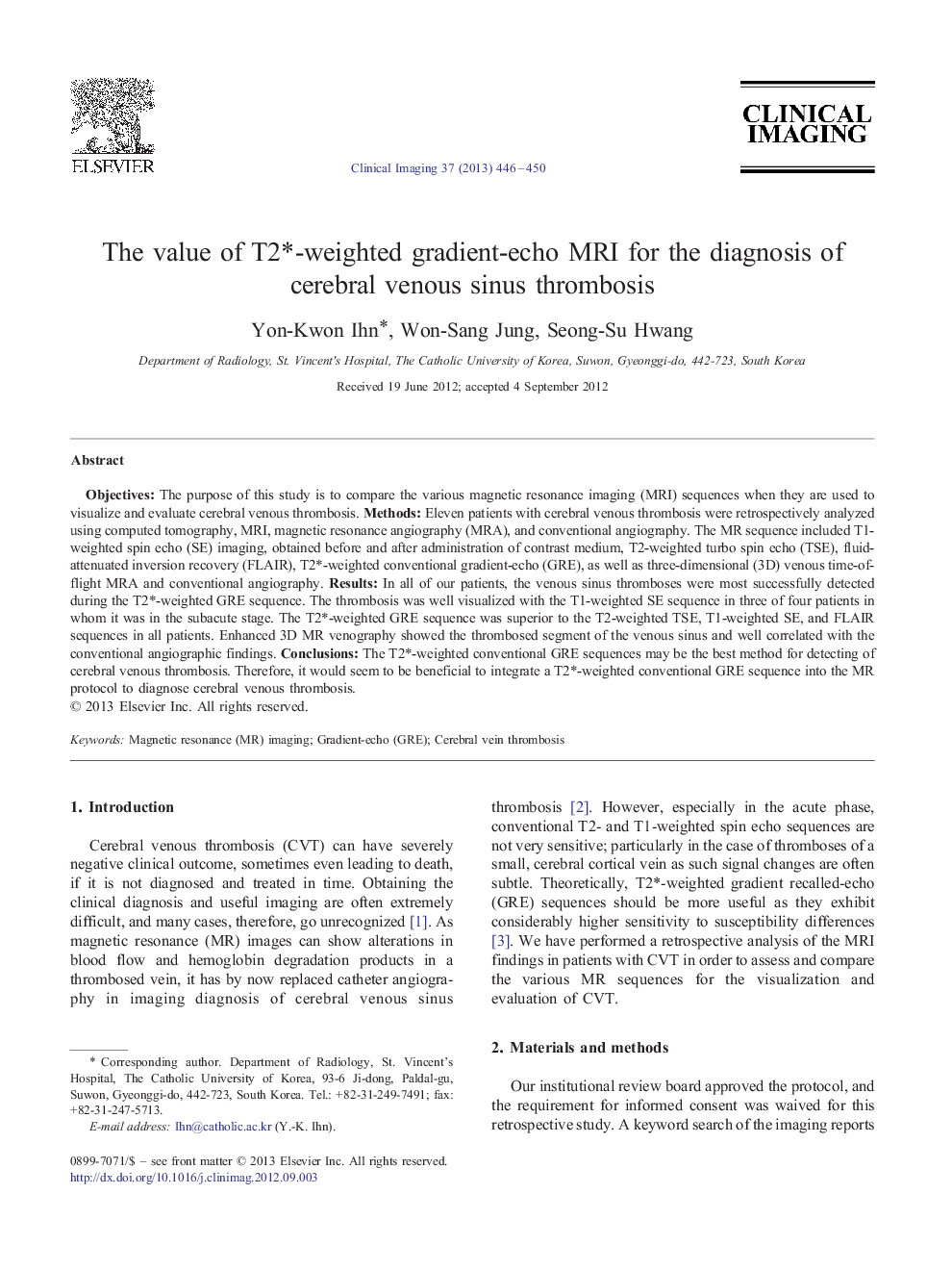| Article ID | Journal | Published Year | Pages | File Type |
|---|---|---|---|---|
| 4221659 | Clinical Imaging | 2013 | 5 Pages |
ObjectivesThe purpose of this study is to compare the various magnetic resonance imaging (MRI) sequences when they are used to visualize and evaluate cerebral venous thrombosis.MethodsEleven patients with cerebral venous thrombosis were retrospectively analyzed using computed tomography, MRI, magnetic resonance angiography (MRA), and conventional angiography. The MR sequence included T1-weighted spin echo (SE) imaging, obtained before and after administration of contrast medium, T2-weighted turbo spin echo (TSE), fluid-attenuated inversion recovery (FLAIR), T2*-weighted conventional gradient-echo (GRE), as well as three-dimensional (3D) venous time-of-flight MRA and conventional angiography.ResultsIn all of our patients, the venous sinus thromboses were most successfully detected during the T2*-weighted GRE sequence. The thrombosis was well visualized with the T1-weighted SE sequence in three of four patients in whom it was in the subacute stage. The T2*-weighted GRE sequence was superior to the T2-weighted TSE, T1-weighted SE, and FLAIR sequences in all patients. Enhanced 3D MR venography showed the thrombosed segment of the venous sinus and well correlated with the conventional angiographic findings.ConclusionsThe T2*-weighted conventional GRE sequences may be the best method for detecting of cerebral venous thrombosis. Therefore, it would seem to be beneficial to integrate a T2*-weighted conventional GRE sequence into the MR protocol to diagnose cerebral venous thrombosis.
